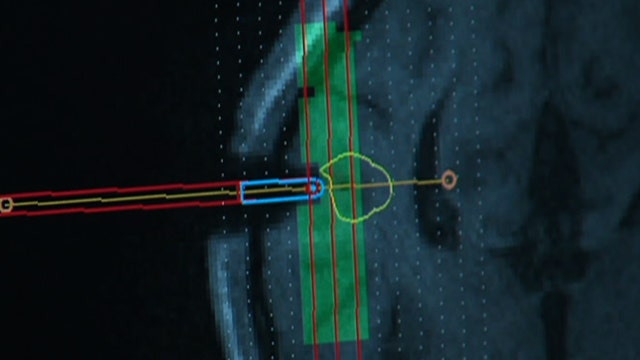Treating epilepsy with lasers
Epilepsy affects 2.5 million Americans and can be debilitating. Doctors at the Cleveland Clinic are performing laser therapy to end patient’s seizures. It’s less invasive and quicker than the traditional craniotomy surgery many patients get
Collin May, 18, loves riding bikes, going fishing and playing video games. He has dreams of joining the United States Marine Corps, but a serious medical condition— epilepsy— has kept him from all that.
“At night I would have the seizures and wouldn’t get a lot of sleep at all,” May told FoxNews.com. When he woke up, he’d be tired, which would lead to more seizures, including when he was class.
Epilepsy is a brain disorder that causes seizures, which can affect people in very different ways. According to the Centers for Disease Control & Prevention (CDC), about 4.3 million adults in the U.S. have the diagnosis.
May’s seizures began when he was about 10 years old, and he went on to have more than 50 seizures a day. The central nervous system disorder left him unable to drive, and his sleep was disrupted.
Doctors tried electronic implants and several medications, but they did more harm than good, his dad said.
“There were time periods where he was pretty much a zombie,” Collin’s dad, Todd May, told FoxNews.com. “I had to come to the realization that my son, as I knew him, was literally gone.”
This continued until they took a trip to the Cleveland Clinic in Cleveland, Ohio, where doctors perform laser ablation therapy to eliminate seizures. Doctors pinpoint where in the brain the seizure originates by using a mapping technique, stereoelectroencephalography (SEG). Then they target the area with a laser during a two-hour procedure.
“We implant the laser probe exactly in the location from where we record the seizures using the SEG,” Dr. Jorge Gonzalez-Martinez, a staff neurosurgeon at the Cleveland Clinic Epilepsy Center, told FoxNews.com.
One of the standard treatments for epilepsy is a craniotomy, a four-hour surgery that involves removing the affected part of the brain with a large incision, and requires a week for recovery.
In January, May underwent laser therapy— he only needed one switch and went home after 24 hours.
May hasn’t experienced any seizures since and said it was a “big relief.” Doctors say about 50 percent of laser patients remain seizure free in the years following surgery. The technology was created seven years ago and while doctors don’t know long-term outcomes beyond that time period, Gonzalez-Martinez said the outlook is promising.
“The whole world is open to him,” his dad said. “We just hope he seizes every opportunity that comes along and no more epilepsy.”
May has his sights on earning his driver’s license and pursuing his dreams to enter the Marines.

